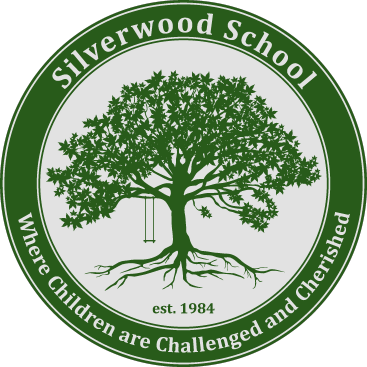Arts & Sciences
Science at Silverwood
Science at Silverwood is taught with curiosity at heart and the scientific method in mind. It is a wonderful place to build resilience as we learn what does and does not work, and how much of a part we play in the process. Each building is taught on a 2-year rotating curriculum with units and topics that are both enriched and fortified by the other curricular programs, through collaborative efforts with the lead teachers and specialists.
Science in the Barn - Primary Ages
Curriculum 1 – The 5 Senses, Earth & Space
Curriculum 2 – Animal Groups, Dinosaurs
Barn students get to explore the campus through scavenger hunts, simulations, and Goal Stroll observation hikes. The expectation for each student is to continue to develop and cultivate their natural curiosity for the world, and make creative and helpful impacts.
With stewardship as our focus, we routinely go out on Litter-Getter patrols to keep our campus looking pristine and safe, as we use our observational senses to discover the beauty and wonder of our earth and its inhabitants.
Individual and class projects depend entirely on student interest and where our conversations take us. Barn students have dissected owl pellets, put on their paleontologist hats for on-site fossil digs, and created life-size chimera creatures from found materials after reading the “What If I Had Animal. . .” book series.
Science in the Treehouse - Intermediate Ages
Curriculum 1 – Weather, Geology & Volcanoes, Space
Curriculum 2 – Botany, Salmon, Marine Science
Intermediate students build on their natural curiosity and begin to learn how to effectively apply the scientific method. Through a series of classroom mysteries, students become Science Sleuths as they use the steps to make informed guesses and problem-solve.
Treehouse science lessons are often tied in with the social studies unit on local Native American life. Students study indigenous plant and animal species and use their accumulated knowledge to build villages and huts. From raising and releasing classroom salmon to visiting local beach tide pools, the Treehouse classroom is always on the move.
As in the Barn, some assignments and projects are dependent upon classroom dynamics and student interest. Treehouse students have built and set off model volcanoes, started their own weather report “channel”, and have even switched places with Ms. Beth to become the teacher.
Science in the Lodge - Senior Ages
Curriculum 1 – Ecosystems, Chemistry, Physics
Curriculum 2 – Human Anatomy & Physiology
As our resident seniors, the Lodge students are given a lot of independence in both their science assignments and projects. Not only do we encourage parents to take a back seat in project completion, but a great focus is placed upon self-advocacy and student choice.
Many assignments offer different personal extensions which help to reinforce the main requirements. Students are asked to consider all they have learned and make costumes, create informational brochures, organize and design campaigns, or build dioramas to demonstrate both their comprehension and application.
Students continue to be encouraged to exercise their curiosity, with a grander access to our 18-acre classroom. There are higher expectations for their assignments, and requirements to develop greater endurance in note-taking and observation-recording as they prepare for junior high, high school, and beyond.
Art at Silverwood
3rd Grade Student Art, inspired by Artist Study of Joan Miro
Art at Silverwood is provided for all classes, K-6, and encompasses both the visual and performing arts. Students learn the elements and principles of design, as they work on both teacher-driven and student-led projects, often geared towards their lessons in the regular classroom. Utilizing both 2-D and 3-D materials, each student is free to explore and create pieces that demonstrate their understanding of these elements.
Students also participate in the dramatic arts. We incorporate improvisation, emoting, collaboration, music, and dance. Students may engage in reader’s theater, script-writing, puppetry, musical theater, or video production as they examine plot, character development, setting, theme, point of view, and conflict. Visual art, such as costuming and set-design, are also included.
Emphasis is placed on the subjectivity of art, with plenty of opportunities for students to take part in self-critique, constructive criticism for their peers, and interpreting the perspective and work of other artists throughout history. Through our Artist Studies, students learn about everything from ancient techniques to the modern works of contemporary artists.









